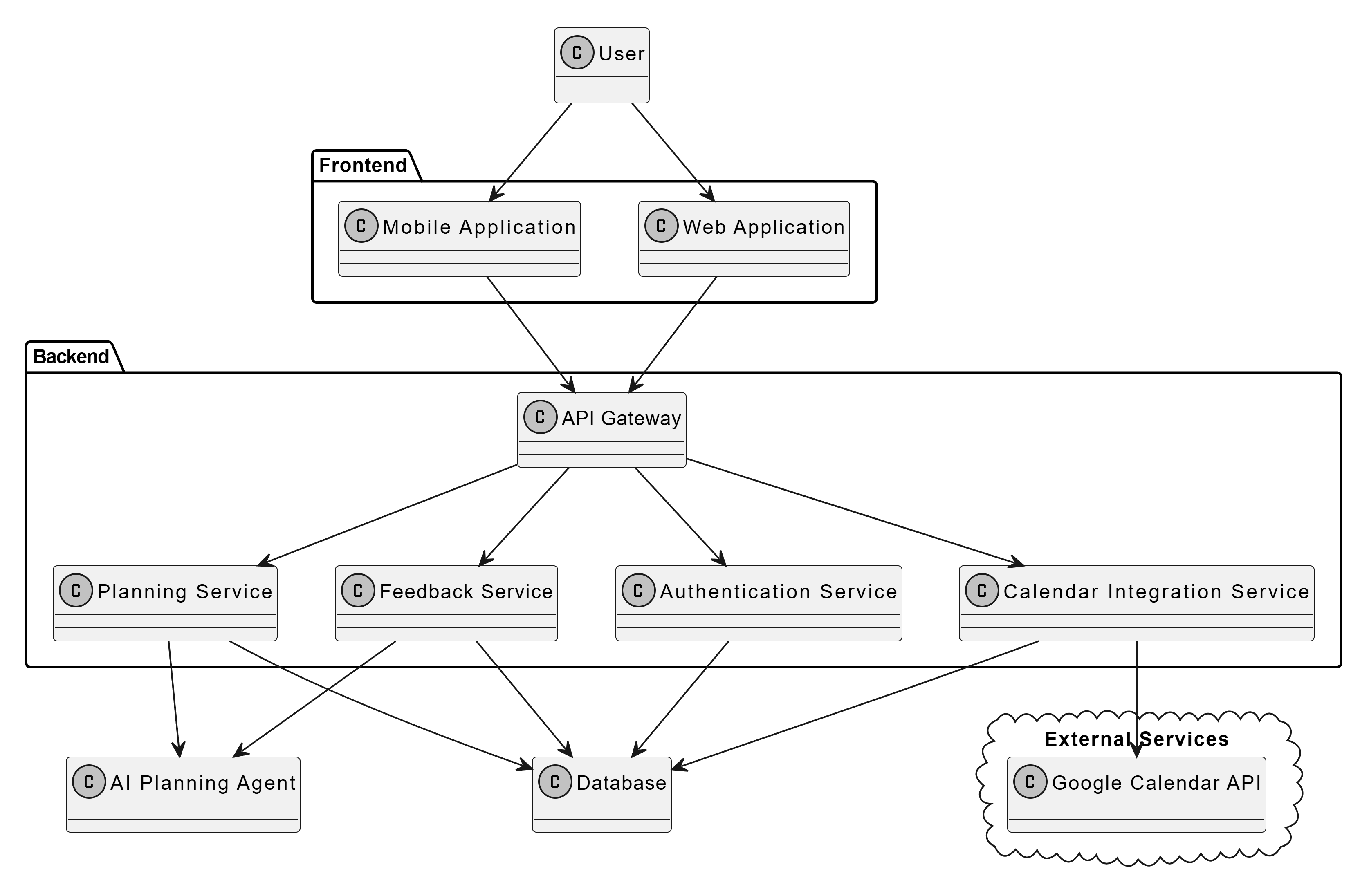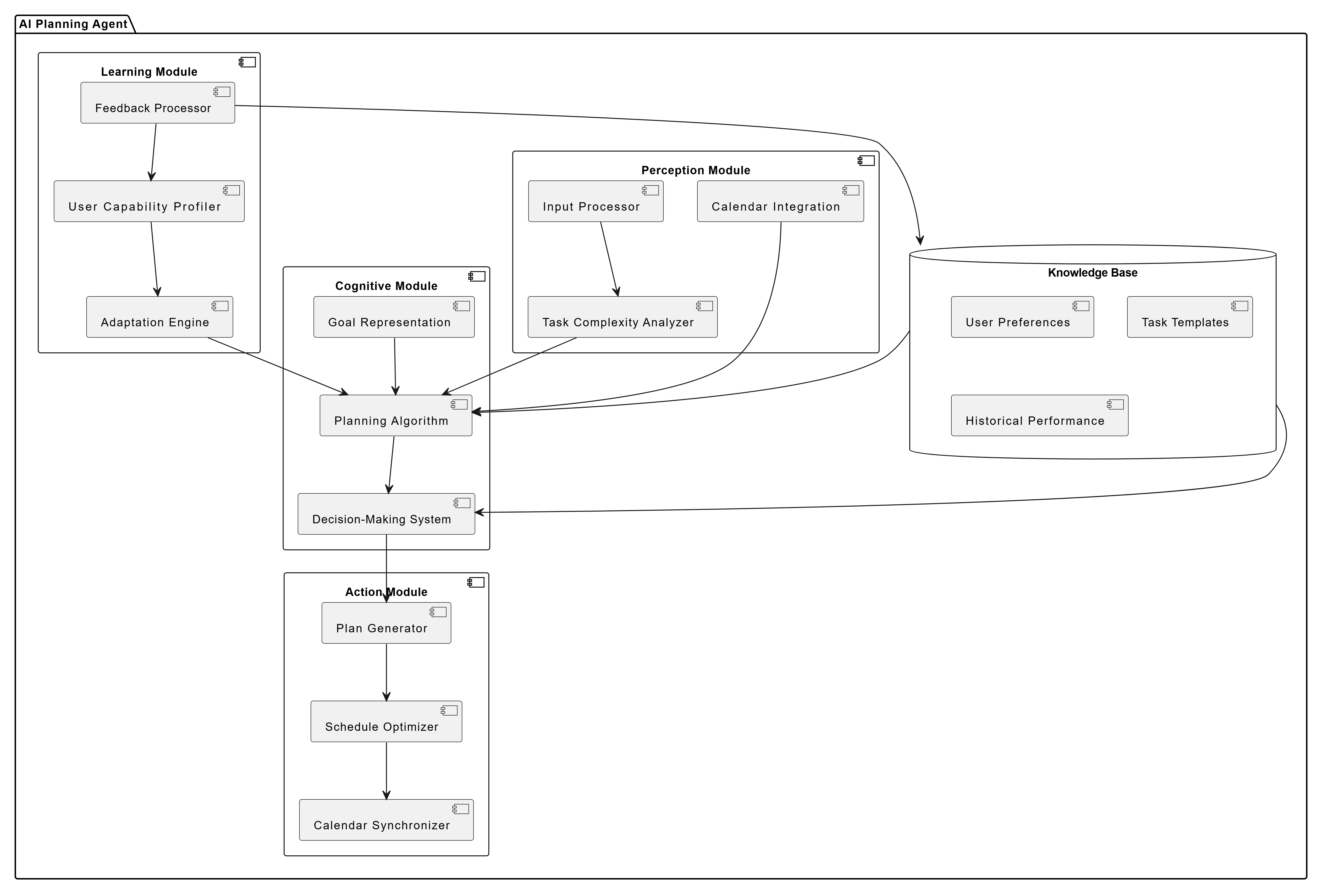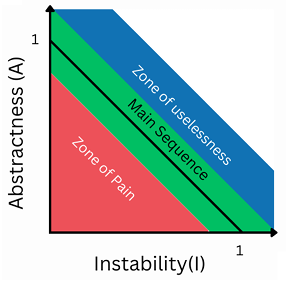project-proposal-2025
PlanForMe: Personalized Goal Planning and Task Management System
Abstract
In our society, students often find themselves stuck in an endless cycle of unfinished tasks, regret, and anxiety about future workloads. PlanForMe addresses this challenge by offering a web/mobile application that transform long-term goals into actionable, personalized short-term tasks, just like daily mission in games. Leveraging human-in-the-loop machine learning, PlanForMe adapts to each user’s unique capabilities and circumstances, thus effectively breaking the paralysis of overthinking and enhancing productivity.
By helping users manage their time more efficiently, the software relieves the psychological burden of incomplete work. Integrating with user’s calendar systems and complexity assessment of tasks, our software provides a solution to goal achievement and time management. When delivering this software, our goals are to prioritize modularity by using microservices architecture, availability and scalability by using IaaS like AWS, security by using standard encryption methods and follow strict data privacy regulation. Stop overthinking and start achieving with PlanForMe.
Author
Name: Quang Minh Tien Nguyen
Student number: 48588238
Functionality
Designed to address the challenges of overthinking and task paralysis, PlanForMe helps users effectively manage their short-term tasks while working towards long-term objectives.
Features
1. Goal Setting and Planning
- Users can input both long-term goals (such as career paths, year-long goals, or semester goals) and short-term task lists (for weekly, daily).
2. Personalized Adaptation
- On the dashboard, the user can provide feedback on completed or uncompleted tasks, which can be done throughout the day.
- System learns and adjusts future plans based on user capability and schedule changes.
3. Google Calendar Integration
- The app automatically syncs with user’s plan from Google Calendar, requesting user’s permission. It provides intelligent scheduling around user’s existing commitments.
4. Feedback Loop and Learning System
- Users can attach relevant documents (PDFs, text files) to tasks and the system will based on that to assess task complexity and time requirements.
- Based on user’s daily feedback on task completion and upcoming task’s complexity, the system refines planning algorithms and give personalized planning.
Sequence Diagram

Architecture Diagram
 The technical architecture diagram shows the system broken down into distinct services (Planning Service, Feedback Service, Authentication Service, and Calendar Integration Service) that communicate through an API Gateway.
The technical architecture diagram shows the system broken down into distinct services (Planning Service, Feedback Service, Authentication Service, and Calendar Integration Service) that communicate through an API Gateway.
AI Planning Agent Architecture

Scope
User Authentication
- Simple email/password login
- Basic profile management, including only personal information
Goal and Task Management
- Input interface for long-term goals (career, yearly, semester)
- Input interface for short-term tasks (weekly, daily) with title, description, and due date
- Mark tasks as complete/incomplete
- Delete tasks
AI Planning Agent
- Using LLM with task planning prompt to generate daily plan without human feedback
Google Calendar Integration
- Weekly calendar view showing tasks by day
- Basic visual indication of task status (pending/completed)
- One-way export of tasks to Google Calendar
- Read-only view of existing Google Calendar events
UI
- Mobile-responsive design
- Clean and functional interface
- No complex animations or advanced UI features
Techincal Consideration
- Use a lightweight framework like React.js
- Firebase for database and authentication
- Google Calendar API for calendar integration
Quality Attributes
Modularity
PlanForMe has a microservices architecture that promotes modularity through independent components. Each service operates autonomously, enabling separate development cycles and scaling. The API Gateway creates loose coupling between services, facilitating component updates without system-wide disruption. This architecture ensures clean separation of concerns and minimizes interdependencies between business logic components.
Scalability
The microservices architecture also enables efficient scaling to accommodate fluctuating user demands. Key components like the AI Planning Agent can scale independently using cloud services (Amazon SageMaker), optimizing resource allocation. The microservices approach supports distributed processing across multiple instances and leverages cloud auto-scaling to handle usage spikes (AWS App Mesh).
Availability
PlanForMe to ensure users can access their plans and receive timely updates. Multiple instances of each service can be deployed to prevent single points of failure. The API Gateway can distribute traffic across service instances, maintaining responsiveness during peak usage. For fault isolation, issues in one service (e.g., Feedback Service) don’t compromise the entire system, allowing core functionalities to remain operational.
Security
As PlanForMe use a lot of personal data with user’s consent, protecting these data is a top priority. All information is encrypted using industry-standard protocols (AES-256 for data at rest, TLS for transit). The API Gateway centralizes authentication and authorization policies. Multi-factor authentication protects user accounts and administrative access. Regular security audits and penetration testing identify vulnerabilities proactively. Despite using a centralized database, strong role-based access controls limit data exposure.
Evaluation
Modularity
To evaluate PlanForMe’s modularity, we will employ both automated testing and code analysis:
- Module Independence Testing: We will conduct monthly automated testing of each service to verify they function independently. Success criteria include each module operating without dependencies on others and maintaining functionality when other modules are modified.
- Code Analysis: Based on research by Primadani et al. (2023), we will employ both cohesion and coupling metrics:
- Cohesion: We use Chidamber and Kemerer Lack of Cohesion in Methods (LCOM) metric to assess the structural cohesiveness of a component. A lower LCOM score indicates higher cohesion. Our success criteria is an LCOM score of 1 for each major service.
- Coupling: We will measure using abtractness index (A) and instability index (I) so that we achieve a state of optimal balance of abstractness and instability in the green area as the figure below:

Availability
For availability, we’ll focus on ensuring PlanForMe is accessible when users need it by monitoring its uptime, measuring high-load response time, and load testing:
- Using tools like Better Stack, we’ll track system availability with a target of 95% uptime during peak usage hours (7 PM to 11 PM - as people are off from work and school) every 30-day period.
- We’ll regularly measure the system’s response time for key operations like plan generation and updates, with a target maximum of 2 seconds under normal conditions.
- Using tools like Apache JMeter, we’ll simulate peak user loads to ensure the system maintains performance under stress. The system should maintain 3-second response times under 3x normal peak load.
Scalability
We evaluate PlanForMe’s ability to grow with its user base using the system’s performance and cost:
- We’ll measure system performance at regular user count intervals (like 1x, 2x, 5x, 10x current users - assuming the app is currently used by 1000 users per day). Response times at the maximum testing load should not increase by more than 50% of the normal load.
- We’ll track cost per user as the system scales and aim to decrease 15% in cost per user for every doubling of the user base.
Security
Security evaluation will focus on protecting user data and ensuring system integrity using penetration testing, encryption audit, log analysis, and compliance check:
- Bi-annual penetration tests by a third-party security firm will identify vulnerabilities. All critical and high vulnerabilities must be addressed within 48 hours.
- Quarterly reviews of encryption practices will ensure all user data is encrypted with up-to-date algorithms like AES-256 for data at rest and TLS for data in transit.
- Monthly reviews of access logs will detect any unauthorized access attempts, with a target of zero successful unauthorized access incidents.
- Bi-annual audits will ensure continued compliance with relevant data protection regulations (like Privacy and Other Legislation Amendment Act 2024), aiming for 100% compliance with no major findings.